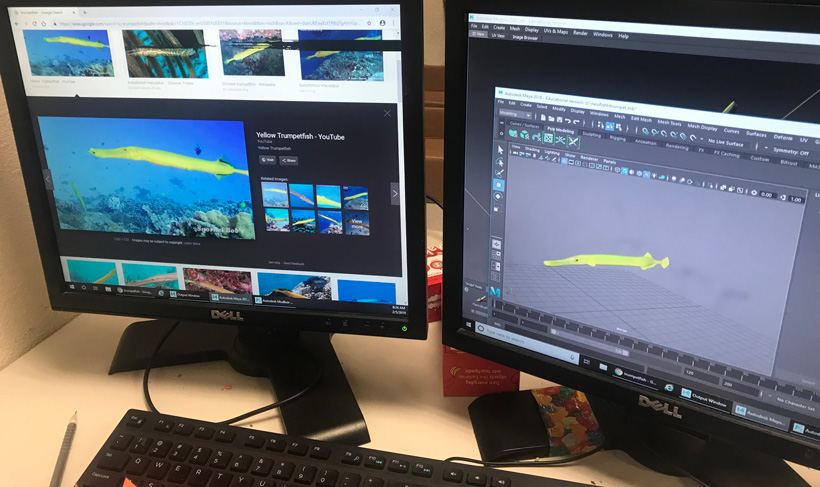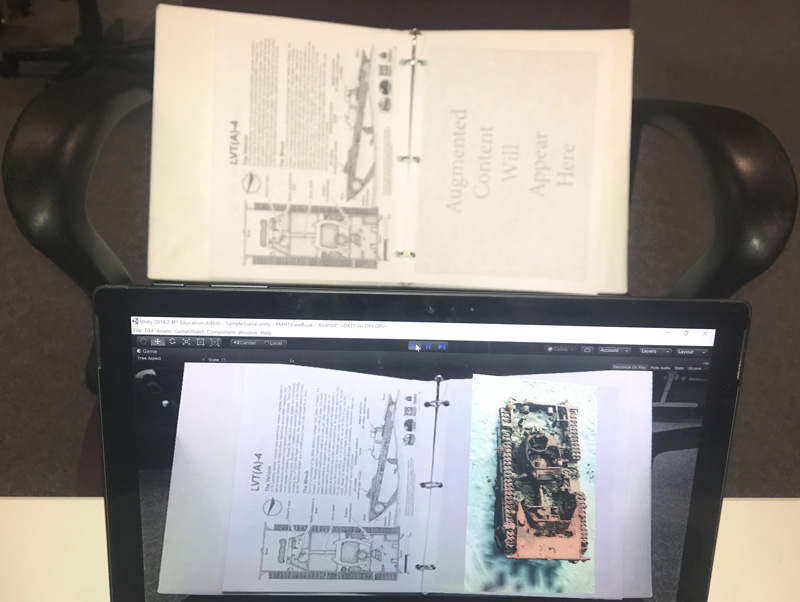In October last year, the remote U.S. commonwealth of Saipan was decimated by super typhoon Yutu, a Category 5 storm that ripped directly through the South Pacific community, pancaking homes like houses of cards. One of the most powerful cyclones ever recorded in the region — and tied for strongest storm on earth in 2018 — it levied winds of up to 180 mph on the Northern Mariana Islands, knocking out power and splintering everything in its path, including local schools.
Kagman High School wasn’t hit as badly as others, but in an isolated community this size, everyone is impacted. It also added a new dimension to the school’s collaboration with William J. Palmer High School in Colorado Springs, where Sean Wybrant is a career and technical education teacher. In the fall, William J. Palmer landed a $15,000 Colorado Succeeds Prize for technology-enabled learning, sponsored by Arrow Electronics, to create augmented and virtual reality (AR/VR) experiences for sharing between their Colorado classrooms and high schoolers halfway around the world at Kagman.

Wybrant and his students have been working across the miles with his counterpart Gerard Van Gils, a 2017 Teacher of the Year from the Commonwealth of the Northern Mariana Islands. Both schools are building 3D models from East Carolina University’s Maritime Studies department and the Smithsonian in hopes of teaching others about the Saipan Maritime Heritage Trail and the Battle of Saipan.

A real-world approach to next-gen tech
Already, Wybrant’s students have created a functional virtual reality museum that works with wireless headsets. “You can walk around on the inside of the virtual museum,” said Wybrant. “You can touch a small virtual version of one of these World War II wreck sites out in Saipan, and it will turn on the wreck in front of you in life size, and you can walk around it.” A “teleport” feature enables visitors to jump from place to place once inside the environment.
As a teacher of game design classes that are part of his school’s computer programming curriculum, Wybrant doesn’t want his students to just learn to code. Rather, he wants young people to have the skills to apply next-generation technology to real-world problems and work well with others in the process — an essential skill all technologists must have when building solutions in today’s highly fragmented innovation ecosystem.
His classes go well beyond coding and encourage students to embrace the arts as well, with about six to nine kids working on a project at a given time. “I have students who break into teams and we try to pick authentic problems to solve, and then they work together,” he said. “You might have two students who are really interested in art and 3D modeling and design working with two kids who are really into the computer science piece.”
Wybrant’s programs are guided in part by advice from industry about the career skills that today’s kids need to develop for future success. The mantra that every kid needs to learn to code scares him a little, he said, because the danger is that they can learn coding through a tutorial but won’t know how to practically design software or user experiences. Worse still, it doesn’t teach them to work as a team.
Bringing AR/VR learnings to Saipan
The partnership between Wybrant and Van Gils came out of conversations at various events. Van Gils teaches college preparation courses at Kagman and created the Million Dollar Scholars Program to match promising students with higher-education opportunities not available on the island. Wybrant saw an opportunity to not only take his own students further, but also make their learnings and capabilities accessible to others.
The Succeeds Prize — a partnership between the business community, Denver’s 9NEWS (KUSA-TV), Colorado Succeeds and mindSpark Learning — recognizes and rewards Colorado’s transformational public schools and educators who are driving strong student success.
“Arrow was proud to sponsor the technology-enabled learning award with Colorado Succeeds,” said Alex West, Arrow’s corporate social responsibility manager. She underscored the company’s focus on initiatives around technical education as well as supporting practical, collaborative values within the next generation of innovators.
One of Wybrant’s students is currently adding an effect to the virtual museum, allowing users who are seemingly submersed to see shimmering water around them complete with a rainbow of swirling tropical fish. Meanwhile, another group has attached 3D modeling to reference materials provided by East Carolina University and their partners.

As readers browse text, the sunken wreckage materializes from the pages.

Students work with a variety of headsets including Oculus Rift, HoloLens and different types of wireless VR.
You can’t just make a model
The project also has become a chance for students at both schools to become teachers in their own right, documenting work and creating resources that are more accessible for others following in their similar circumstances.
“People don’t understand just how difficult it actually is for students who are trying to do the work first,” Wybrant explained. User documentation for technologies such as Microsoft HoloLens and other VR platforms is often aimed at developers and not written in accessible language for students, adding that video tutorials tend to focus on methodologies or resources not available in most high schools.
There are other concepts that students need to understand. Learning about 3D modelling also means learning about vertices and mathematics, for example. “It’s not as simple as you just making a model of whatever you want.”
Wybrant’s students are fortunate to have advanced technologies at hand. While most other schools in the district emphasize business programs, William J. Palmer High School has a digital media studies program as well as dedicated labs for video and audio, not to mention a recording studio. And then there’s Wybrant’s lab, which is a little different and gets the most investment. It essentially has everything needed to be a game design studio, including drawing tablets, a vocal isolation booth, computers capable of doing 3D modelling, plus an Oculus Rift, a couple HoloLenses and two wireless VR headsets. There’s even a live-action motion-capture system funded through a grant with matching donations from industry.
The students are now making videos and recording podcasts, and they should have a growing library over the next few months. “Now that we have fully functional experiences, we are turning a more significant and concerted effort to show how to do the work for the kids in Saipan and beyond.”
Back on the island, many parts of the community are still struggling, and it’s going to be a while until the school year returns to normal. But students at Kagman are hopeful and continue to plug away on the project. Wybrant plans to visit this summer with two or three from his class, where their virtual project will suddenly become tangible and real as they pass on what they’ve learned and exchange ideas face to face.

